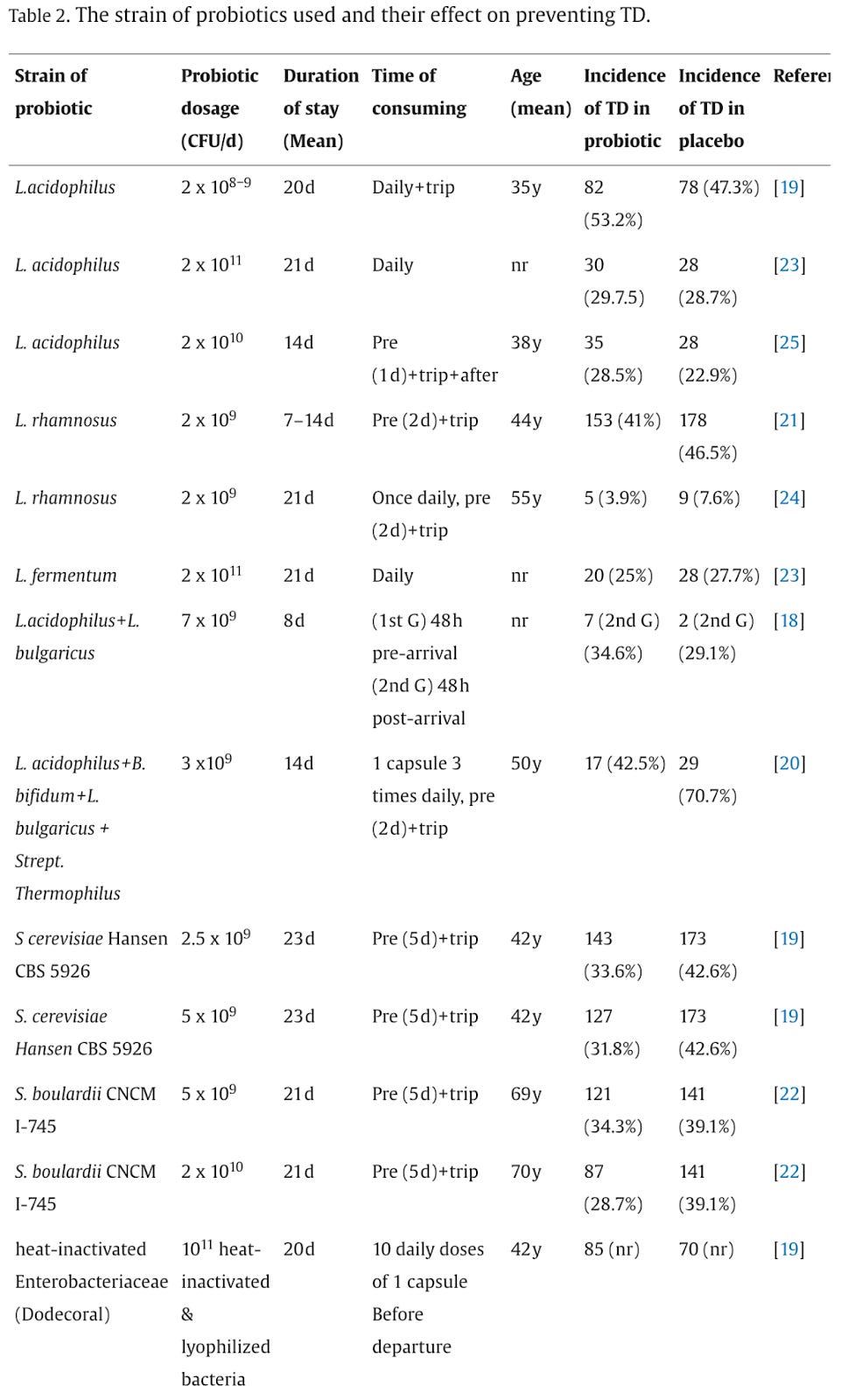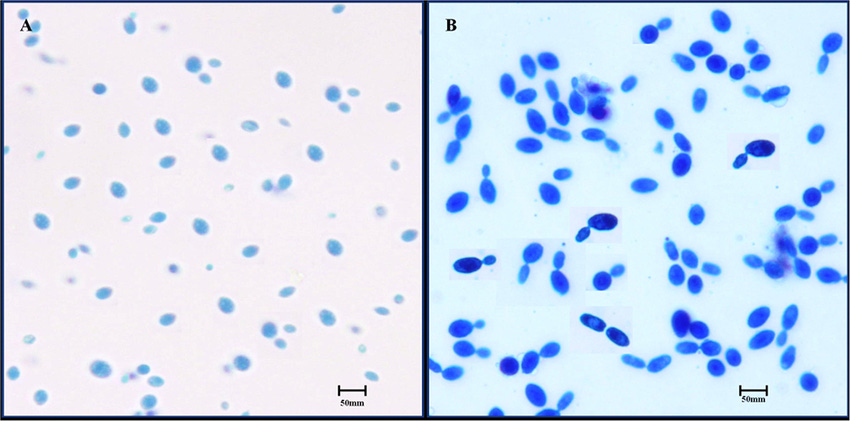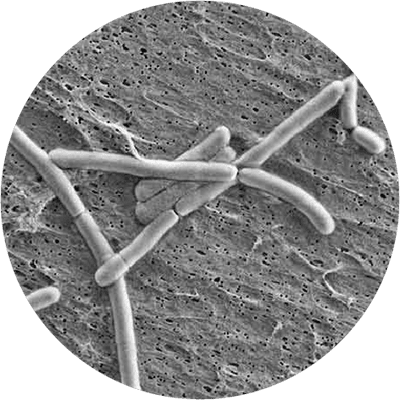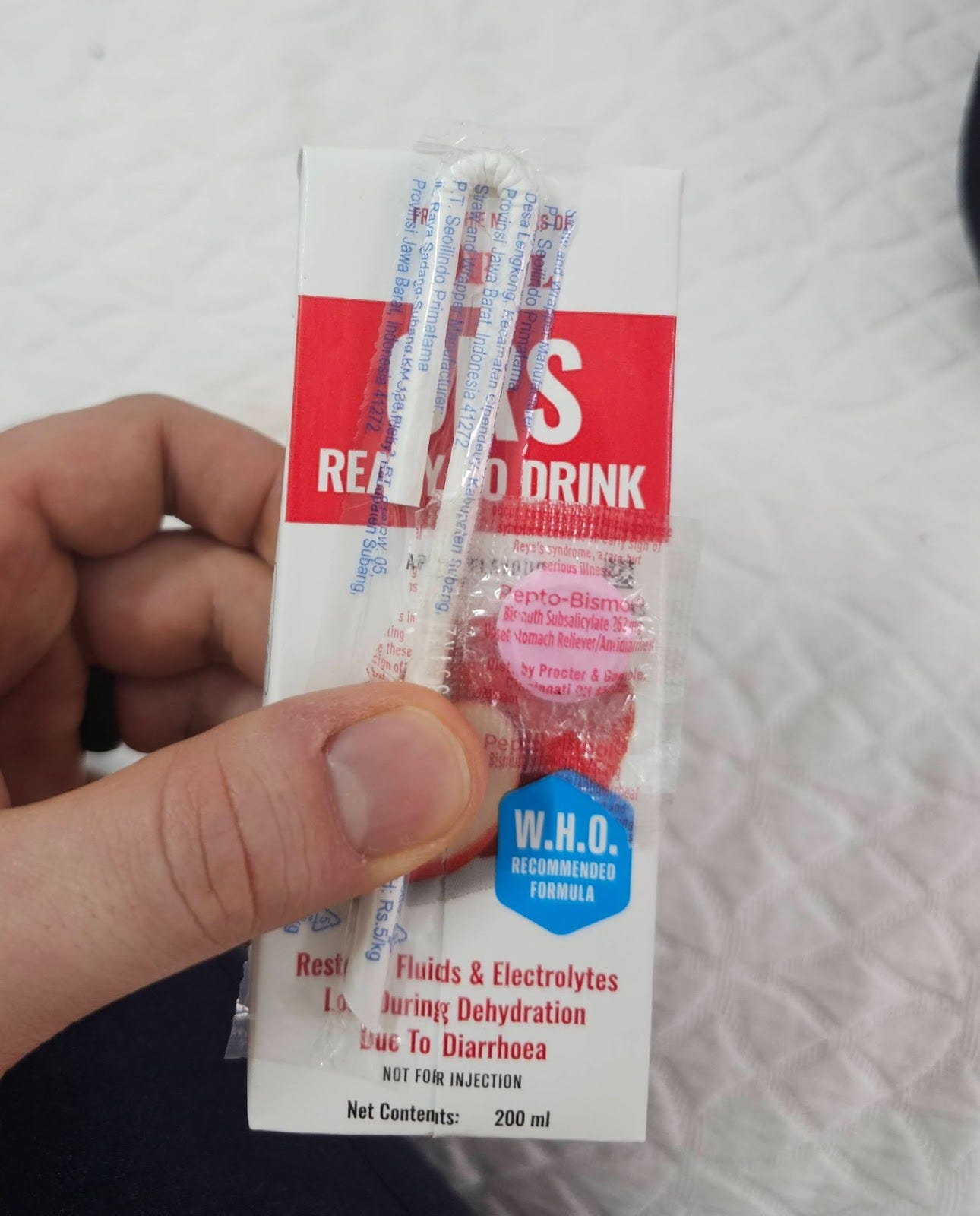I have discovered the ultimate weight loss secret. I lost seventeen pounds in two weeks. SEVENTEEN POUNDS.
The beauty of my system is its breathtaking simplicity. No calorie counting. No forbidden foods. You don't even need to exercise, unless you count sprinting to the bathroom as cardio, which I suppose technically it is.
The trick is to go to a foreign country and eat or drink something inadvisable. This has happened to me several times—I seem to have a gift for it, really—but the last time was particularly calamitous. What followed was two weeks of what we might charitably call "severe gastrointestinal distress," though that rather understates the experience. I began planning my vacation routes entirely around bathroom (squat toilet) locations.
Now, with another trip approaching, I find myself researching ways to avoid a repeat performance. The condition is officially known as traveler’s diarrhea (TD) and can be caused by any number of bacteria (though most commonly E. coli or Campylobacter), viruses (especially norovirus), or parasites, and can lead to vomiting, cramps, and other delightful symptoms.
The standard prevention advice starts with the obvious: when you see that street vendor selling jars of mysterious alcohol with cobras in them, just keep walking. (I say this with the authority of someone who has never, ever managed to just keep walking.) The Mayo Clinic has also helpfully condensed centuries of learning into their rule of thumb: "boil it, cook it, peel it, or forget it."
But as I was researching, I started to see suggestions about probiotics and got interested. [1]The idea is to fight off the bad bacteria by recruiting an army of good bacteria. It's like preparing for an invasion by hiring friendlier invaders first.
Though it’s not the first line of defense, I’ve come around to the idea that it might be worth giving it a try. You're never going to achieve zero exposure to nasty pathogens when traveling. You can try—you can adhere to a diet of food so hot you can see steam rising off it, but you must realize you're eating it with silverware that was washed in the very water you're trying to avoid. You can boil your food into submission, but then you pick up your glass with hands you washed in the sink. The bacteria are everywhere, lurking (plotting?) on their fomites.
The point is, perfect avoidance is impossible. What you need instead is a digestive system that can handle the occasional bacterial incursion without staging a full revolt. This is where the probiotics come in—building up your intestinal defenses before the enemy arrives. So join me as I go down the probiotics rabbit hole.
Comparing Different Probiotics
The best reference I’ve found on probiotic benefits is from a 2024 meta-analysis by Alharbi et al. They scanned the literature for randomized controlled trials (RCTs) of probiotics used to prevent TD and found 10 that met their criteria. The strains and high-level results are shown in the table below:

We’ll keep coming back to this meta-analysis, but rather than go over this table line by line, let’s dig into some of the probiotic strains.
Saccharomyces boulardii CNCM I-745
In the early 1920s, a French microbiologist named Henri Boulard was traveling through Southeast Asia when he noticed locals chewing on lychee and mangosteen skins to treat cholera-induced diarrhea (and, according to this company selling it as a tea, they also made tea out of it). Boulard wondered what it was in the fruit skins that might be responsible, and, a few years later, isolated the yeast Saccharomyces boulardii. (Presumably Saccharomyces nativeshavebeenchewingitformillenniaii wouldn't fit on the label.)
S. boulardii has since become one of the probiotic world's biggest success stories, with studies to back up its reputation. The specific strain that's been studied is S. boulardii CNCM I-745—and yes, those numbers and letters matter. Just as a Honeycrisp apple differs from a Red Delicious, different strains of the same species can have vastly different effects. Virtually all the research has been done on this particular strain, so when I mention S. boulardii from here on, that's the one I'm talking about.
A 1993 placebo-controlled, double-blind study by Kollaritsch et al. of 3000 Austrians traveling to what researchers called “distant regions” found that it significantly reduced TD. A 2010 meta-analysis by Lynne V McFarland described that study as follows:
Travelers were randomized to either 250 mg/d S. boulardii, 1000 mg/d S. boulardii or placebo, starting five days before leaving and throughout the duration of their trip (median of 3 wk). Only 1016 (34%) completed the study, but S. boulardii significantly reduced the incidence of traveler’s diarrhea in a dose-dependent manner. Of the travelers given placebo, 39% developed diarrhea whereas only 34% of those given the lower dose and 29% of those given the higher dose of S. boulardii developed traveler’s diarrhea (P < 0.05).
Going from 39% to 29% is statistically significant with a large enough sample size, yes, but it's not exactly the bacterial force field I was hoping for. Most travelers didn't get sick anyway, and of those destined for digestive drama, most still achieved it despite swallowing their capsules. Still, reducing your chances by about a quarter isn't negligible—for every four people who would have spent their vacation on intimate terms with foreign plumbing, one gets to actually enjoy the trip. Overall, McFarland declares, “The use of S. boulardii as a therapeutic probiotic is evidence-based for both efficacy and safety for several types of diarrhea.”
This, however, was only enough for Alharbi et al. to list S. boulardii among the probiotics that “may prevent TD”. I know, a ringing endorsement that ranks somewhere between “better than nothing” and “couldn't hurt”.

Lactobacillus rhamnosus GG (LGG)
The next stop is Lactobacillus rhamnosus GG (LGG). The "GG" stands for Gorbach and Goldin, the two researchers who discovered this particular strain. The table in the meta-analysis doesn’t call out which strain, but if you follow the references, you’ll find that they were, in fact, testing LGG.
The Probiotics Institute[2] calls it "the world's most documented probiotic strain" with over 250 studies to its name. However, despite all of these studies, the meta-analysis only considered two to have met their criteria.[3] Two studies instead of only one for S. boulardii is definitely an improvement, but to call these “well-studied”—at least for TD prevention in humans—would be a stretch.
The first RCT was Prevention of travellers' diarrhoea by Lactobacillus GG by Oksanen et al. (full text) published in 1990. Researchers followed 820 Finnish tourists vacationing in two resort towns along Turkey’s southern Mediterranean coast.
The results were, shall we say, underwhelming. In the placebo group, 46.5% got sick, while in the LGG group, 41.0% got sick—a reduction of about 12%. Further, the results were not statistically significant (p=0.065). In plain English, this means we can't rule out that the difference was just random chance.
The two resort towns showed different results. In one location, LGG seemed to work reasonably well, while in the other, it was mostly negligible.
What's going on? Well, there are two possibilities. Maybe the two towns had different bacterial environments—different local cuisines, different water sources, different E. coli strains, that caused the difference. Or maybe it's just statistical noise. My conclusion is that this study hints at a small protective effect, but even that isn’t conclusive.
The 1997 study by Hilton et al. (full text) took a different approach. Researchers recruited 400 healthy American adults about to embark on trips to Asia, Africa, and Latin America. Participants started taking either LGG or a placebo two days before departure and continued throughout their travels.
Of the original 400 participants, only 245 managed to follow the protocol correctly, leaving them with 126 people having taken LGG and 119 on placebo for a grand total of 2,743 travel days to analyze.
The results actually made LGG look good for once. The LGG group reported diarrhea on only 3.9% of their travel days, compared to 7.4% for the placebo group. That's about a 50% reduction.
However, this isn't an apples-to-apples comparison with the other studies. Instead of asking whether participants got diarrhea during the trip (a yes/no question), Hilton asked whether they got diarrhea each day.[4] This methodology is better at detecting partial protection—if LGG reduces three days of diarrhea to one day, that shows up as a 67% improvement here, whereas in the Oksanen study, that person would still just count as 'sick.'[5]

Lactobacillus acidophilus
Lactobacillus acidophilus is everywhere in multi-strain blends, though after looking at the research, I suspect that it's primarily there to bulk up the bacteria count.
The meta-analysis by Alharbi et al. found three randomized, double-blind, placebo-controlled trials of L. acidophilus. In all three cases, the rates of TD were higher for the group that took L. acidophilus than for the placebo group. Some of the results weren’t statistically significant, but it seems like, in the best case, it doesn’t work, and the evidence points to it being counterproductive. Despite the meta-analysis saying “Lactobacillus acidophilus showed no efficacy in preventing TD except when mixed with other strains”, they still listed L. acidophilus as among the five probiotics that “may prevent TD”. Unless you're aiming for my explosive weight loss plan (patent pending), I'd save the money and skip this one entirely.

Multi-strain Blends
One thing you commonly see in probiotics products is multi-strain blends. The logic is simple: if one strain is good, surely a dozen must be better. Throw everything at the problem and something's bound to work. But does it?
Not really. Lynne V McFarland (the same researcher who commented on our S. boulardii study) published a systematic review in 2021 examining whether multi-strain probiotics outperform their single-strain counterparts. Her conclusion was, "In most cases, multi-strain mixtures were not significantly more effective than single-strain probiotics." The key, she argues, isn't the number of strains but whether any given strain has actual evidence behind it.
The Alharbi et al. meta-analysis lists five different probiotic strains that, again, “may prevent TD”: L. acidophilus, L. rhamnosus, L. fermentum, S. cerevisiae, and S. boulardii. Perhaps what’s going on is that the multi-strain blends are grabbing at least one of the strains that work, and the others are mostly there for marketing.
But a problem with multi-strain blends is that you don’t know how much of each strain you’re getting. Most products list the amount of total probiotics, not the amount of each individual strain. Chances are, you’re getting lots of the cheap ones and probably not as many of the good ones. A 2016 study by Morovic et al. found that many blended products consisted predominantly of Lactobacillus acidophilus and Bifidobacterium animalis subsp. lactis, two strains that have not been shown to work.
Best Selling Probiotics
After diving into the research, I'm a bit underwhelmed. The effect sizes aren't impressive; none of them work as well as I had hoped. We're talking about modest improvements, not miracle cures. But modest improvements beat explosive diarrhea in a foreign country. And it might vary by person. Hilton et al. noted that "the protective effect appeared to be more pronounced in patients with a prior history of traveler's diarrhea," which I choose to interpret as the universe's way of saying 'Yes, we mean you specifically.'
The top choice when you search “probiotic” on Amazon is Physician's CHOICE Probiotics 60 Billion CFU. The first thing to note about it is that S. boulardii and L. rhamnosus GG are completely missing! (See the appendix for why you won’t find LGG in the cheap multi-strain blends.) It claims “10 diverse strains”. Diversity might be good, but if they’re all not helpful in 10 different ways, it’s still not helpful. I would skip this one.
Amazon Basics has a probiotic. It has the following 8 probiotics: Lactobacillus acidophilus La-14, L. rhamnosus Lr-32, L. plantarum Lp-115, L. salivarius Ls-33 and L. bulgaricus Lb-87; Bifidobacterium lactis Bl-04, B. bifidum Bb-02 and B. longum Bl-05. It has L. rhamnosus, which is good, but, remember, it’s the strain that matters. The one in this product is L. rhamnosus Lr-32, not LGG. Similarly, it lists Bifidobacterium longum, which has been found to support digestive health. However, that finding only applies to the strain B. longum UABl-14, which is not the same as B. longum Bl-05, and this 2024 study by Shehata et al. shows that those two strains behave differently. I’d say skip it.
If you look through enough products, you’ll find some with S. boulardii in it, like this Probiotics 70 Billion CFU, but the problem is, you don't know how much S. boulardii is in it. Based on the Morovic study, these multi-strain formulas are probably mostly L. acidophilus, which does not seem to work. I think none of the top-selling products are what we’re looking for.
My Recommendations
I say stick with the two single strains that seem to have the best actual science behind them: Lactobacillus rhamnosus GG and Saccharomyces boulardii. Unfortunately, there are no studies that I could find that combine these two strains.
For LGG, your option is Culturelle Pro Strength Daily Probiotics[6]. (See the appendix for why there aren’t more options.)
S. boulardi, however, is easily available online, commonly sold as Florastor in the US. This is indeed S. boulardii CNCM I-745, the exact strain from the studies.[7]
You need to start taking these things two or three days before you leave. Your intestines need time to get acquainted with their new residents, to sort out the sleeping arrangements, as it were. Continue taking them throughout your trip.
Results
I wrote the above a month ago. Then, armed with Lactobacillus rhamnosus GG and Saccharomyces boulardii, I ventured to South India and Sri Lanka. I'm proud to offer you the results of my tiny, n=1 experiment: I got sick… thrice.
It's not all bad news, though. The two bouts each lasted only a day. The third lasted three days, though that estimate might be generous—by day four, my gut hadn't exactly recovered so much as negotiated a detente. We established a demilitarized zone that, unfortunately, surrounded all food. Peace held as long as I kept my distance, but the moment I reached for a samosa, hostilities resumed. Still, I came back only 11 pounds lighter instead of my previous 17, so... progress?
When I got sick, I started taking a double dose of probiotics, which may have helped my recovery. I also immediately abandoned any pretense of scientific experimentation and took Pepto-Bismol, which probably deserves most of the credit for my relatively quick recoveries.

My final thought is that the benefits of probiotics to prevent TD are probably real and somewhat meaningful. I think there's a good chance they helped, and if you, like me, often get sick when traveling, even a 25-50% reduction in TD is worth the price of admission. I'll be packing them again next time, right next to my Pepto-Bismol and my lowered expectations.
Remember, probiotics are just one layer of protection. These pills might reduce your risk by 25-50%, but probiotics are no more an invitation to drink straight from the Ganges than carrying bear spray is an invitation to challenge a bear to a wrestling match. It ain’t gonna save you. Most importantly—and I cannot stress this enough—no matter how persuasive the man with the jar, no matter how much he insists it's a local delicacy, do not, under any circumstances, drink the cobra alcohol.
Appendix
Can probiotics be dangerous?
Some bacteria can kill you, of course, but those aren’t the ones being sold as probiotics. For the ones on the supermarket shelves, the track record seems to be that they are very safe. If you look, you’ll find that they are listed as GRAS (Generally Recognized As Safe) by the FDA and/or granted QPS (Qualified Presumption of Safety) by the European Food Safety Authority (EFSA). The Mayo Clinic says side effects are rare and probiotics are safe.
If you want to dig deeper, you can search this FDA site for GRAS notices. Here is the FDA notification of GRAS for LGG.
I think the risk with probiotics is that they waste your money, not that they harm you physically.
Does the right probiotic depend on where I’m going?
My guess is the answer is “yes”, but nobody's done the research to match specific probiotics to specific destinations. We do know that different regions harbor different nasty bacteria. Latin America is E. coli territory (second reference), Southeast Asia is relatively higher in Campylobacter jejuni (second reference), and South Asia serves up mostly E. coli with a side of everything else. Logic suggests that different probiotics might work better against different bacteria, but so far, researchers have only tested against 'traveler's diarrhea' in general.
Why are there probiotics for men and women?
Short answer: marketing.
While there are certainly differences in gut microbiota between men and women, these variations appear to be relatively minor and not significant enough to require completely different probiotic formulations. The scientific literature I’ve seen on TD prevention doesn't show meaningful sex-based differences in probiotic effectiveness.[8]
So while I don’t think there’s anything wrong with taking one marketed towards men or women, I tend to avoid both because it’s an indication that the marketing department has too much influence into the product, although if you find one that is marketed to a specific sex, it should be fine.[9]
How are they shelf-stable and living? Are they growing?
For the curious, if you’re wondering how billions of supposedly living organisms can sit in a bottle on a shelf for months without food, water, or refrigeration, it’s pretty cool science. We’re told they’re living, right, so are they reproducing in there like some kind of microbial terrarium?
The answer is that they’re alive, but in a state of suspended animation. In their dried, powdered form, there's almost no free water[10] available, which forces them into what is called an "anhydrobiotic state." They essentially shut down all operations: no eating, no reproducing, no energy production. They're alive in the most technical sense, but doing absolutely nothing. This dormancy isn't permanent, though. Heat and oxidation still slowly damage the cells, which is why probiotics still expire.[11]
The real magic happens when you swallow them. Once they hit the moisture and warmth of your digestive system, they wake up like microscopic Sleeping Beauties. Suddenly surrounded by water and nutrients, they resume normal bacterial activities—metabolizing, dividing, and hopefully crowding out the less friendly microbes.
Why do I need to keep taking it? Shouldn’t a single batch be enough to colonize?
Not necessarily. England's first attempt to colonize North America—the Roanoke Colony—collapsed within a year from food shortages and hostile locals. A second attempt vanished entirely, leaving behind only the word "CROATOAN" carved on a post.
Oh, wait, you were probably asking about probiotic colonization of the gut. In that case, they don’t permanently colonize you. They pass through the gut, help balance things while they’re present, then fade once you stop taking them. Though unlike the Roanoke colonists, they don't leave cryptic messages carved in your intestinal walls.
Why don’t I just treat the symptoms?
You could also skip the probiotics entirely and just treat the symptoms when they arise. Imodium and Pepto-Bismol are the classic choices here. Interestingly, you can actually take Pepto-Bismol preventively—two tablets four times a day—but many people don’t like the side effects (turning your tongue/stool black, potential constipation, etc.). Most people decide they'd rather risk it. The downside of waiting, of course, is that once you're sick, these medications are damage control, not a cure. You're managing the disaster, not preventing it.
Note that Pepto Bismol is much harder to find outside of North America, so if you do intend to use it, I recommend bringing it with you.
Why you won’t find LGG in Cheap Probiotics
One thing you won’t see in any of the multi-strain blends on Amazon is LGG, despite it being "the world's most documented probiotic strain." This ended up being its own rabbit hole, but I will keep it very short. The original patent for LGG was granted in 1989 and expired in 2006. LGG has also been trademarked, and all over documents, I see the phrase “LGG® is a trademark of Chr. Hansen A/S”. (See, for example, where they announced their partnership with celebrity Jessica Alba.) That’s because in 2016, the company Chr. Hansen purchased the trademark for LGG for €73 million.

Anyway, I think the upshot of this all is that anyone can use the organism, but if you market LGG in your product, you owe Chr. Hansen money. So you’re not likely to see it in the lower-cost “kitchen-sink” approaches. The Culturelle brand (owned by the multinational company dsm-firmenich[12]) holds the primary U.S. retail license, which is why they advertise as “the only probiotic supplement with 100 % LGG.” As in, they’re willing to hand over some money to Chr. Hansen.
A Note on Industry Influence
Now that we’ve met Chr. Hansen, it’s time to return to our source of unbiased scientific information that we learned so much about LGG from: The Probiotics Institute. It turns out, funnily enough, that this institute that has so much good stuff to say about LGG happens to be—coincidentally, I’m sure—owned by Chr. Hansen.
This… is not ideal.
I'm going to avoid the tangent on whether industry funding undermines the science here (future blog post coming on that), and simply say: despite these conflicts of interest, I think LGG is still worth trying.
Though our primary source has been the meta-analysis by Alharbi et al., I kept running into results from The Probiotics Institute every time I researched LGG. Meta-analyses follow the GOGI principle—garbage in, garbage out. If you take a bunch of biased studies and average them, the bias doesn’t go away. You just become more confident in a biased answer.
Perhaps there's publication bias at play here due to these conflicts of interest: positive results get published while negative ones gather dust in file drawers, making treatments look more effective than they really are. Given the lack of independent institutions and the fact that probiotics is a multi-billion dollar industry, it’s reasonable to wonder.
Fortunately, there are ways to sniff out this kind of bias. If negative studies were being systematically buried, we'd expect to see certain telltale patterns in the published data—specifically, a suspicious lack of small studies showing negative or minimal effects.
A 2018 meta-analysis by Jong-Myon Bae looked for exactly this problem. He examined only the double-blind, placebo-controlled, randomized controlled trials and created a funnel plot of their results. If studies were being hidden, the plot would look lopsided, like someone had taken a bite out of it.
Starting with 1,227 papers on probiotics, Bae excluded those that didn't meet his criteria. Just requiring that they be RCTs knocked out over two-thirds of them. In the end, only 11 met his standards (most of which overlap with the meta-analysis by Alharbi et al.).

This is an annoyingly small number. There’s all this hype about how studied these probiotics are—LGG has over 250 clinical study publications, Bifidobacterium animalis subsp. lactis BB-12 has over 300 scientific publications, according to a study by employees of Chr. Hansen (who also owns BB-12)—yet so few meet the meta-analysis criteria for inclusion.
One takeaway is that much of the analysis is garbage not sufficient to understand the effects in humans. The other takeaway is that maybe these meta-analyses did a good job sorting through all the mess, and we should trust them more. However, with only 10 or 11 good studies across all strains of probiotics, we shouldn’t be too convinced by our results.
Anyway, Bae made the following funnel plot and, fortunately, it does not show the telltale signs of publication bias.

So despite Chr. Hansen's empire-building, the evidence that does exist appears to be honest, just frustratingly sparse.
- ^
Not everyone recommends probiotics, though. Both the Mayo Clinic and the Cleveland Clinic have pages on traveler’s diarrhea and how to avoid it, and neither of them mentions probiotics.
- ^
Chr. Hansen, the company behind The Probiotics Institute, owns the LGG® trademark (more on them in the appendix).
- ^
This doesn’t mean the other studies were bad, per se. The criteria included RCTs in humans investigating the effects of probiotics on preventing TD. There is plenty of other research that goes into a product before it’s tested in humans, so we shouldn’t be surprised that only a small fraction made it into the meta-analysis.
- ^
They also used slightly different definitions of ‘diarrhea’, so, again, it’s not an exact comparison.
- ^
The Oksanen study did track diarrhea by day, but their final statistics used the cumulative results.
- ^
It’s a two-month supply, and the serving size is 12 billion CFU. The dosage is a little confusing because this page of the Probiotics Institute recommends taking 10 billion CFU a day. Although elsewhere on their website, they recommend taking 2 billion CFU a day.
- ^
A bottle gives you 20 capsules at two per serving, so a 10-day supply. Each serving is 500 mg (about 10 billion CFUs), which falls between the doses tested in the Austrian study. The serving size is probably fine, though you could double up for potentially better protection.
- ^
Oksanen et al. says “Male travellers were as likely to be stricken with diarrhoea as female travellers” and Hilton et al. says “There was no evidence that the impact of Lactobacillus GG varied as a function of age or gender.”
- ^
I’m speculating here, but I wonder if part of the decision to market based on sex is because women can also use probiotics for vaginal health. For example, a 2003 study by Reid et al. found that L. rhamnosus GR-1 and L. fermentum RC-14 were beneficial for vaginal health. But that's a completely different ecosystem with different needs. Trying to solve both gut and vaginal health with one probiotic is unwise. Instead of just thinking “probiotics are good,” it’s probably better to think “this specific probiotic is good for this specific problem.”
- ^
Free water means the portion of water that isn’t chemically or physically bound to anything in the powder and is therefore available for biological reactions. It’s the water that microbes could use for metabolism, growth, and enzyme activity.
- ^
This also means it’s good to make sure you base your purchasing decisions on the amount of live cultures, not the amount at the time of manufacturing.
- ^
Why is the company name officially lower case? Is this a trend? Is this what cool companies do now?